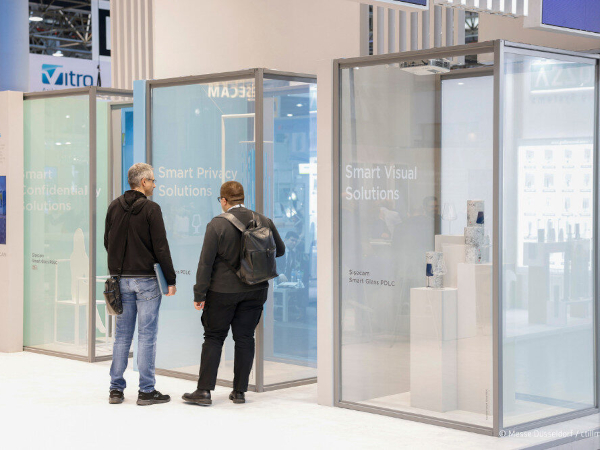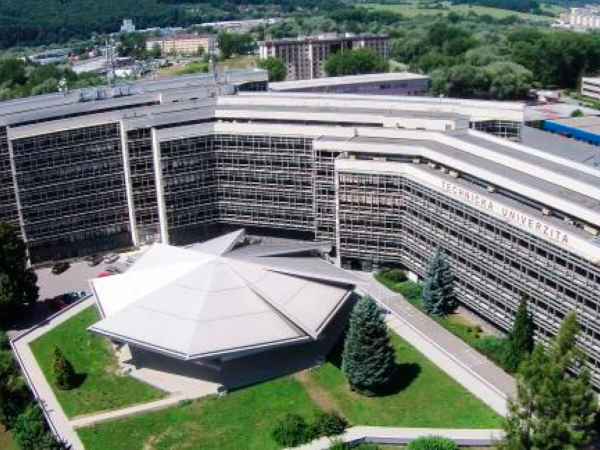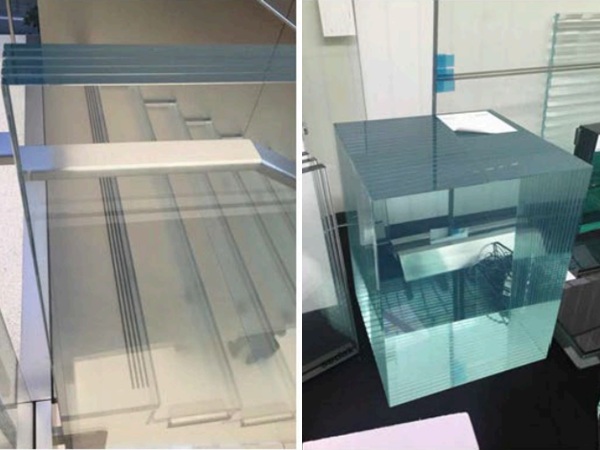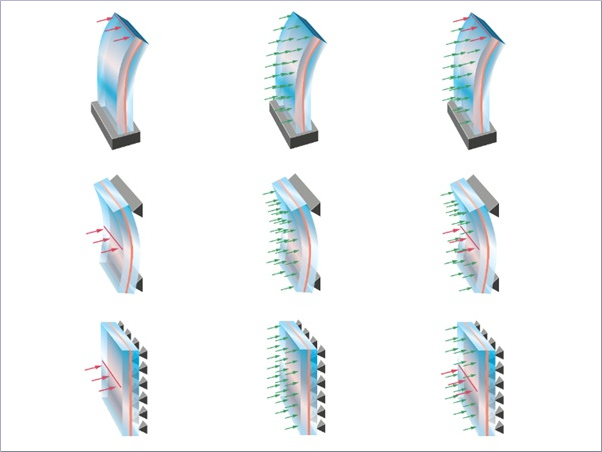Author: Reece Wood
reece@buildingtransformation.co.uk
Content
1) Global Change & Sustainability.
2) Sustainable Urbanisation & Green Building Regulations.
3) A Comparison of Façade Innovations & Protective Coating Solutions.
4) Material Innovation Vs Proactive Façade Management.
5) Strategic Façade Management.
6) 3 Essential Steps to Long-term Façade Performance.
7) Sustainable Future Façade Conclusions.
1) Global Change & Sustainability
As the global economy tries to recover from its last dip, huge investments are being made in the construction industry, both in established and emerging markets. It’s anticipated that the volume of construction output will grow by more than 70% to achieve an annual worth of $15 trillion worldwide by 2025 (Source: Global Construction Perspectives Report).
As the world changes, traditional communications continue to fragment, opportunities and a desire for a better standard of living have created a wave of urbanisation. By 2050 it is anticipated that there will be an extra 2 billion city dwellers across the globe (Source: Global Construction Perspectives Report).
Migration combined with city gentrification and the desire of the wealthy to have more space may seem as though it would result in an unsustainable process of change where urbanisation meets traditional communications, where there are no boundaries, just one unsustainable sprawl and mass of built environments.
“To achieve a lasting transition towards sustainability, large scale conversion of our built environments, cities, transport & power generation is key. Infrastructure built today determines tomorrow’s burdens.”
(Source: Helga Weisz, Lead Editor for Potsdam Institute for Climate Impact Research.)
Sustainability can only achieved if both developed and developing countries take the same or similar action, working with an agreed common global goal, considering the context of the future, natural resources & innovation; each country, designer and construction company supporting the same common global goal rather than individual agendas.
Innovation of new energy efficiency products, optimising current façade space to create more sustainable buildings, proactively protecting current built façade assets, integrating transport systems and increasing resourcefulness will all need to work together to support a more sustainable global future.
In this article we review the current options available to increase façade performance and its contribution towards creating a more sustainable built environment. We consider design and material innovation along with exploring new, proactive and unique façade management and protection strategies that are designed to enhance the façade performance, support commercial objectives and prolong architectural design intent whilst also reducing resource requirements for new developments.
2) Sustainable Urbanisation & Green Building Regulations
As towns and cities continue to grow outwards and upwards the need and responsibility to design and implement more sustainable construction solutions continues to increase. Green building regulations have become a major consideration for regions that are experiencing higher urbanisation and motorisation e.g. the Middle East.
There is strong evidence throughout the globe that leading construction companies are taking action and demonstrating their commitment to best practice solutions, following guidelines such as those set out in the US Green Building Council or Emirates Green Building Council.
Is the answer to keep innovating and developing new materials to ensure that the construction targets can be met for financial return? Is building green good enough? Can the long-term impact of building green and working to new guidelines be quantified?
Architectural design, innovation of space and how building façades are used within a new development to save, preserve or create more energy certainly has a massive part to play in achieving greater performance as well as a greater number of green buildings.
Optimising a building envelope, its façade, roof and elements of external space will all support a more sustainable urbanisation approach. Building and façade design need to be adapted to the geography to contribute and take advantage of natural resources i.e. sun, rain or wind, thus sustainable urbanisation now and in the future. Each building design and construction needs a greater consideration from its initial design and conception.
“ What is the building’s legacy and its long-term contribution to sustainable urbanisation?”
(Source: R Wood 2015)
The UAE is now leading the way for façade innovation, building efficiency and sustainable futures. A change in attitudes combined with huge steps forward in product development and performance has seen large investment in many government or university building façades such as the installation of photovoltaic panels, LED lighting, thermal insulation around windows or the application of specialist Nanotechnology coatings to help increase building efficiencies.
3) A Comparison of Façade Innovations & Protective Coating Solutions
Without innovation of façade materials, improvements in performance, reduction in development costs, ease and speed of application along with more creative uses of built façades and space, the ambitions of sustainability are devalued.
Façades account for a large percentage of the external building composition, so it’s only logical that this space is effectively utilised to support sustainable building design, energy savings, economic independence, reduced pollution and carbon footprint.
The UAE, Saudi Arabia & Qatar are spearheading façade architecture and materials in innovation, taking advantage of the climatic opportunities that surround them. These countries have the highest share of green buildings in the Middle East and the concept of green buildings through façade material innovation is rapidly leading the way of enhanced façade performance and sustainability targets.
Throughout the UK and Europe, creative façade design, material innovation and integration lead the way on new façade construction, but there is very little action, innovation or consideration given to how current façades can be utilised to help create more sustainable environments. Façade refurbishment is common practice, but the time allocated to reviewing the façade’s contribution to sustainability or the installation of new innovations to help façades contribute to a more sustainable future could be questioned.
It seems logical that the built environment and façade space could help play a big part in supporting future sustainability objectives, but commercially there are many reasons as to why such investments would be made when the building owners have a different objective. The challenge now is finding the solutions that create commercial as well as sustainable interest for commercial property owners.
Over the past 10 years there has been real progress in façade innovation and its contribution to sustainable building performance. Inspiration and results from larger scale developments with successful designs and performance returns would ideally have the ability to be scaled down to smaller development projects, soresults can be positively scaled throughout the built environment.
Bioclimatic Façade Architecture in New Construction
‘There is a new international design trend that can help to reduce building energy requirements where there is currently an overreliance on air-conditioning in areas with hot or humid climates.’
(Source: University of Nottingham, The applicability on the bio-climatic façade in hot and humid climates, 1/09/2013)
Bioclimatic architecture is an important new international design trend that can help to reduce building energy requirements and dependency on external resources. Bioclimatic façade architecture refers to designing more sustainable buildings to improve thermal and visual performance.
It refers to designing buildings and spaces both interior and exterior, but ensuring local climatic conditions are utilised to improve thermal and visual comfort, designs provide façade protection from summer sun, reduce winter heat loss, and make use of the environment (e.g. sun, air, wind, vegetation, water, soil, and sky) for building heating, cooling and lighting.
The Gherkin, London
Windows open on the outer skin to allow air to enter the cavity between the inner and outer skin.
Universitat Autònoma de Barcelona
The building’s concrete structure is protected by a low cost external skin, which automatically opens and closes in order to regulate solar gain and natural ventilation.
Bioclimatic Second-Skin Façades
‘Successful sustainable bioclimatic design requires material selections that can last the structure or project’s life, taking into account exposure to pollution, corrosive salts, and the likelihood of manual or rain cleaning .’
(Source: RMI 2008, Helzel & Taylor 2012, Hopkins 2012)
Bioclimatic second-skin façades are effectively two façades layered typically between 0.2 and 4.5 metres away from the environmental barrier. The intermediate space can be used to moderate heat, light, wind, noise, pollution, and other environmental stresses whilst windows can be computer controlled to maximise natural ventilation.
A variety of technologies are currently being used as the second façade skin such as louvers, woven mess, perforated screens or green plant screens. The space in between the façades can provide shading, light and air redirection, thermal load balancing, and resistance to heat loss and gain. During the winter, these outer second skins can shelter the inner wall from winter storms, while allowing the sunlight to enter and warm up the building, lowering heating loads.
‘The outer façade can cost effectively transform the appearance of an existing building façade, but the main advantages of this type of technology is the increase natural vitalisation, thermal insulation and acoustic insulation, energy savings and reduced environmental impacts.’
(Source: Lund Institute of Technology, Double Skin Façade, 2006).
The building inhabitants’ connections with their surroundings are improved by these designs. The inner environmental barrier wall frequently has operable windows or provides other provisions for ventilation. The second skin at least partially shades the inner wall, reducing summer cooling requirements while still allowing daylight to enter the building.
Stainless steel is being used for innovative, award-winning, bioclimatic projects around the world because of its longevity and low maintenance requirements.
ThyssenKrupp AG Headquarters, Germany
ThyssenKrupp AG worked with TKQ architect consortium JSWD Architekten and Chaix & Morel to design a new seven building corporate campus in Essen, Germany. The German Sustainable Building Council (DGNB) has awarded the project a Pre-certificate in Gold based on the new German Certification for Sustainable Buildings. Energy requirements are expected to be 20 to 30% below statutory requirements.
All of the buildings are simple glazed structures but their appearance is unique because of their second façade. The buildings are wrapped in automated sunshade systems with Type 316 stainless steel horizontal and vertical slats or custom perforated sunscreens.
These active motorised sunshade systems have moveable triangular, square and trapezoidal fins that are automatically adjusted with changing conditions to save energy. Used in combination with natural ventilation, the system eliminated the need for air conditioning.
Electrochromic Glass
Electrochromic glass uses installed photovoltaic cells that enable the transition of the façade appearance and rate of sunlight deflection. Over the past 5 years there has been vast improvement in the levels of performance obtained from the photovoltaic cells and as performance increases the costs have decreased.
While glass is a favoured product for use in building façades, glare, solar heat gain and UV exposure are problematic and can often make the use of glass impractical resulting in the need to invest in expensive solar shading devices. Glass façades using patented SPD light-control technology reduce the need for air conditioning during the summer months and heating during winter.
4) Materials Innovation vs Proactive Façade Management
“We have a city made to collect solar energy… the sidewalks, all industrial roofs with inclined roofs, all the walls, the options are endless.”
(Source: Abdulla Raffia, Director Municipality Assistant Director-General for Engineering & Planning, Dubai).
Material innovation and creative architectural façades designs will always play a significant role in assisting building sustainability objectives. Innovation must effectively work in line with functionality, aesthetic and commercial returns in order for it to be an attractive and utilised solution. This need is what can often create limitations in their appeal or speed of installation.
By designing and constructing building façades that take full advantage of elevation specific and localised weathering conditions (such as south elevations for photovoltaic façade installations or bioclimatic designs) we can continue to step by step move towards a more sustainable future.
However, many of the green building policies, objectives and targets for sustainability are understandably directed towards new building construction. This however gives little consideration to how we can improve performance or innovations for prolonging the lifespan of current building façades and how this space could more effectively be utilised, retrofitted or managed to help deliver a more sustainable future.
“A key ingredient to supporting future building sustainability targets is through more proactive, service driven & holistic façade management programmes, ensuring we protect or enhance current built assets rather than replace.”
(Source: R Wood, Building Transformation, Nov 2015)
Built façade environments need more planned inspections for effective asset protection and maintenance, ensuring owners and managers of large buildings and expensive capital assets are fully armed with the information and resources they need to make informed business decisions.
There must be reviews on traditional external glass and façade cleaning procurement and programming with questions raised around the value that it currently delivers and its ability to comply with sustainability objectives. It requires a more creative approach and commitment to asset protection rather than new development or replacement. Simply designing and installing new products ultimately use resources throughout the manufacturing, delivery and installation lifecycle.
Prevention is always a more effective strategy than cure, so proactive façade management should be a key sustainable building or facility management solution that protects and prolongs the life span of in-situ façades, thus supporting innovation progress and sustainability targets.
5. Strategic façade management
“A proactive and holistic solution for protecting façade performance and enhancing the lifespan of the existing built environment.”
(Source: R Wood, Building Transformation, Nov 2015)
What is ‘Strategic Façade Management™’?
Strategic façade management is a more holistic, proactive, client service driven solution specifically designed to support sustainability targets whilst helping commercial property owners, investors and managers to protect their property investments.
It focuses primarily on proactively inspecting and managing in-situ building façades, assessing and protecting the condition throughout the external building skin, optimising each opportunity within a traditional cleaning and maintenance programme to take greater action and deliver greater value.
As the level of construction investment grows, it’s never been so important to ensure that those in charge of managing buildings and budgets are aware of the external building fabric condition along with the associated risks of aggressive weathering, especially on tall buildings.
Traditionally there is very little information provided to building owners and managers on the condition of their external façade unless they have specially asked for it. There is little understanding of how high level building materials and curtain walling weather and decay, material life expectancy is not always as it was initially intended with the reality and exposer to more constant or extreme weathering conditions reducing the performance and lifespan of the material.
Without key information, understanding and valuing when to take action or make investments in preventative façade inspections or maintenance becomes unconsidered and unclear, resulting in the external building skin and fabric seeing very little in the form of holistic inspections or action to maintain or prolong the performance of the substrate.
The diagram below demonstrates the relationship between weathering patterns and the impact it plays on façade decay over time, utilised, retrofitted or managed to help deliver a more sustainable future.
Why ‘Strategic Façade Management™’?
Why would you only maintain a third of the external building envelope i.e. glass, whilst the rest of façade and curtain walling turns green with algae, environmental pollution builds and the building envelope looks unbalanced? Why allow façade weathering to build, weaken and break down the building skin, often creating problems beyond simple cleaning or repairs?
Time and time again we see the same issues, high-end commercial properties with pristine entrance areas, clean glass and as soon as you look up, it is a different story. Traditional procurement processes and maintenance budgeting does not always allow for the detail needed to protect the condition of external façades.
As architects continue to push the boundaries in design and widen the use of material selection a traditional ‘one size fits all’ external procurement solution would seem devalue sustainability targets, material lifespan and architectural intent.
Under a strategic façade management programme the façade is proactively and holistically protected, inspected, weathering patterns recorded, material decay itemised, cleaning undertaken, protective coatings applied, minor repairs completed along with real life cycle maintenance costs created to ensure the correct budgets are allocated and action taken to protecting the external building skin, this helping the façade exceed life its expectancy and supporting clients commercial objectives.
This concept has been developed from assessing the condition of a large number of building façades within the commercial property sector, reviewing procurement/maintenance programmes and realising that many of the problems created could have easily been prevented through a more detailed and effective approach. As green building policies and the need for sustainable buildings continues to increase the need to proactively protect and manage building façades become more important.
Making the argument for a proactive maintenance programme - The 3 Ps
Making a convincing argument does not simply come down to money. The façade plays a role in the presentation of the business within the building; and it works hard to protect the function and condition of the building behind it, repelling water and damp, maintaining insulation properties and so on.
So, it is helpful to consider all your own possible arguments for a proactive programme - and these come down to the 3 P’s - Perception, Prevention and Preservation.
1. Perception
“We want our buildings to support out tenants commercial objectives, we want our building to provide us with a return for the long-term”
Land Securities, Property Manager
For many owners/managers, the key driving factor in maintenance cleaning is for perception. The visible outside of a building is the first impression an individual has of a business or operation. However, given that more detail was given to the procurement process, considering and combining the context of perception and ROI a more sustainable façade solution is already in place. With a more detailed understanding of the building façade we can design solutions that support sustainable targets.
2. Prevention
“In Europe, building cleaning is an essential part of the planned maintenance schedules with buildings generally cleaned every 2 years. It’s a cost that property owners prioritise to protect their investments.”
Dutch Façade Inspection Consultants
Regular cleaning and maintenance is the most cost-effective way of managing and maintaining a major asset; it is more efficient and acts as an early warning system of any deficiency before it can grow into a major problem. Through regular inspections, we can provide clients with information to help them make informed decisions and mitigate against future repair and maintenance problems.
3. Preservation
“The windows on the building have been cleaned regularly but no-one has ever cleaned the cladding . Now we have the situation where organic growth is beginning to damage the window sills and we are having to replace the glass ”
UK Building Manager
Selective cleaning alone is not sufficient to prevent the deterioration of the building envelope. The build-up of organic matter can also be a problem, so applying protective coatings to the substrate can help to replenish the cladding surface and inhibit the regrowth of unwanted organic matter.
Accumulating Asset Stress Model
Traditional procurement plays a big part in why building managers and owners allow the façade to decay, the stress to build and material to fail. Many buildings receive nothing more in the way of routine maintenance than regular window cleaning – until one day it becomes impossible to ignore the façade any longer which has now deteriorated to a seriously bad condition. This becomes detrimental to business and undermines the value of the building as an asset.
Commonly seen in the UK, this takes the form of 5-10 year façade cleaning cycle. Being a reactive approach, however, this cycle creates more expensive façade restoration projects as the façade deterioration and repairs increase overtime.
However, during these cycles clients continue to spend large sums money on traditional window cleaning procurement, leaving the building envelope to look unbalanced and a negative reflective of their brand or commercial objectives. It creates accumulating asset stress as seen in this five-yearly cleaning model:
You can see how the asset stress zone grows bigger between major cleans, reflecting the accumulating damage which of course leads to rising maintenance costs.
Proactive Asset Protection
Paying more up front and in a timely manner means paying less in the long term. It is a choice between pouring large resources every several years into a building in terminal decline, or trickling the same resources more strategically and effectively into less expensive and inconvenient preventative maintenance.
A more creative approach could also help save money while increasing the life span and quality of your property, thus supporting sustainability objectives. Building materials could maintain their original design qualities, environment reflect positive commercial or simply outlast their expected lifespan.
6) Three essential steps to long-term façade performance & sustainable façades
A simple, proactive maintenance strategy that protects external building materials from aggressive, localised weathering whilst helping to improve maintenance efficiencies, budget and results.
7) Sustainable Future Façade Conclusions
“Façades create emotion and interest, they reflect values from solid structures and a perception of strength & durability over time.”
(Source: R Wood 2015)
Preserving, protecting and optimising building façades and the space they provide within the current built environment to support sustainability objectives should be the first consideration. There needs to be a much greater focus on maintaining current façade assets through a more proactive approach along with understanding where and how their space can be used towards assisting with improving building sustainability. As innovation continues to improve, material production should over time also assist in supporting commercial return targets.
New innovation of façade materials, design and performance are imperative for supporting future sustainable, construction and green building targets. However to maximise material innovations they must first create more retrofit appeal, ensuring current façade space is more effectively used.
Secondly, they must have a more commercial appeal and be more scalable, cost effective and perceived as an investment. By integrating innovations with proactive façade management strategies we can work towards a greener and more sustainable future, ensuring these combined strategies both play their part in supporting global sustainability targets.
Ultimately continued construction is sustainable; we must protect the assets and façade space already constructed, reducing the need for materials whilst also reducing waste. Proactive façade management and protection is a solution ideally placed to ensure external façade materials and curtain walling are on track to exceed their predicted lifespan, arming those who maintain or own a building with the correct information to make educated decisions.
Author Biography
Every commercial property owner/manager should be looking for new innovations, strategies and information on how to help protect and enhance their commercial property investments. Reece Wood, Author of ‘A Unique Guide on How to Restore & Protect the External Building Façade’ explores solutions and strategies on how best to protect the external building façade. Inside he identifies patterns and offers insight for commercial property specialist who want to:
- Protected for façade and commercial assets for the long-term.
- Increase their commercial ROI.
- Gain greater clarity on how these results can be achieved.
Reece Wood believes a more holistic and proactive approach to managing the external fabric of a commercial property provides the services, solutions and information to achieve the desired results, performance and long-term savings. His book provides a simple strategy to help committed investors keep their buildings in outstanding condition rather than imbalanced and weathered.
Reece Wood is an entrepreneur, thought leader and innovator specialising in the commercial property sector, and is committed to helping commercial building owners protect their investments.
By working with some of the UK’s leading property investment companies, listening to their needs and realising that many of the problems created could have been solved through a more service driven solution for maintaining the external building fabric, Reece has created a unique book with technical information for façade cleaning projects and real life case studies for instant clarity, along with unique strategies to help pave the way for protecting your external building envelope.
Too book a consultation with Reece Wood or claim a copy of the book please email reece@buildingtransformation.co.uk
















